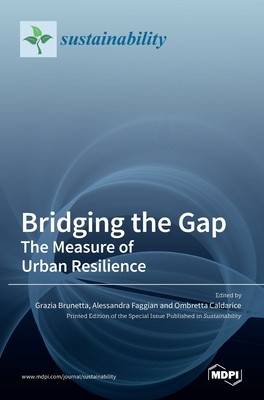
- We will send in 10–14 business days.
- Publisher: MDPI AG
- ISBN-10: 3036507663
- ISBN-13: 9783036507668
- Format: 17 x 24.4 x 2.2 cm, hardcover
- Language: English
- SAVE -10% with code: EXTRA
Bridging the Gap (e-book) (used book) | bookbook.eu
Reviews
Description
The concept of resilience has arisen as a "new way of thinking", becoming a response to both the causes and effects of ongoing global challenges. As it strongly stresses cities' transformative potential, resilience's final purpose is to prevent and manage unforeseen events and improve communities' environmental and social quality. Although the resilience theory has been investigated in depth, several methodological challenges remain, mainly related to the concept's practical sphere. As a matter of fact, resilience is commonly criticised for being too ambiguous and empty of meaning. At the same time, turning resilience into practice is not easy to do. This will arguably be one of the most impactful global issues for future research on resilience. The Special Issue "Bridging the Gap: The Measure of Urban Resilience" falls under this heading, and it seeks to synthesise state-of-the-art knowledge of theories and practices on measuring resilience. The Special Issue collected 11 papers that address the following questions: "What are the theoretical perspectives of measuring urban resilience? What are the existing methods for measuring urban resilience? What are the main features that a technique for measuring urban resilience needs to have? What is the role of measuring urban resilience in operationalising cities' ability to adapt, recover and benefit from shocks?"
EXTRA 10 % discount with code: EXTRA
The promotion ends in 21d.02:06:26
The discount code is valid when purchasing from 10 €. Discounts do not stack.
- Publisher: MDPI AG
- ISBN-10: 3036507663
- ISBN-13: 9783036507668
- Format: 17 x 24.4 x 2.2 cm, hardcover
- Language: English English
The concept of resilience has arisen as a "new way of thinking", becoming a response to both the causes and effects of ongoing global challenges. As it strongly stresses cities' transformative potential, resilience's final purpose is to prevent and manage unforeseen events and improve communities' environmental and social quality. Although the resilience theory has been investigated in depth, several methodological challenges remain, mainly related to the concept's practical sphere. As a matter of fact, resilience is commonly criticised for being too ambiguous and empty of meaning. At the same time, turning resilience into practice is not easy to do. This will arguably be one of the most impactful global issues for future research on resilience. The Special Issue "Bridging the Gap: The Measure of Urban Resilience" falls under this heading, and it seeks to synthesise state-of-the-art knowledge of theories and practices on measuring resilience. The Special Issue collected 11 papers that address the following questions: "What are the theoretical perspectives of measuring urban resilience? What are the existing methods for measuring urban resilience? What are the main features that a technique for measuring urban resilience needs to have? What is the role of measuring urban resilience in operationalising cities' ability to adapt, recover and benefit from shocks?"


Reviews